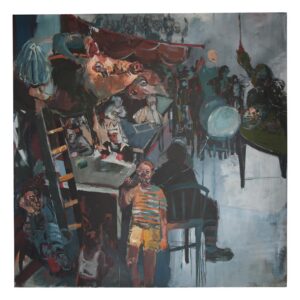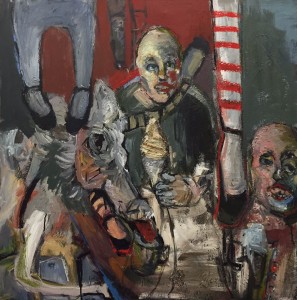Sara Issakharian, an Iranian artists who is participating in the group show Art Without Borders by Living Art Gallery in Hungerford, West Berkshire, answered some questions ahead of the show.
Art Without Borders is your UK debut. How does this group exhibition compare to previous exhibitions in North America and Iran? How does ‘Art Without Borders’ differ?
I have exhibited in both group and solo shows in Iran. The group shows in Iran placed my work alongside other Iranian artists.
The concept of the show “art without borders” is great for me because it brings artists from different parts of the world together. Getting to know them and their experiences, emotions and techniques will be great. I don’t think there is much difference between exhibiting in Iran and the rest of the world in terms of the art. As art does not recognize borders and, interestingly enough, sometimes art can only be explained within borders of its country. For me, it’s an opportunity to show the work to a different audience whose social and everyday life might be quite different from the social and everyday life of Iranian people.

Art is often a very visceral stimulus. How do you capture and portray the ‘everyday life’ in your works? Is there an ubiquitous, umbrella-theme to express a range of emotions and moods?
My work has been affected so much with the themes that I pick up from everyday life in Iran. Walking in the streets of Tehran an observer experiences lots of contradictory phenomena. I love to portray the contradictions of destruction and hope in most of my images. I feel humans are constantly in a struggle between yin and yang and if we take it to a larger spectrum, society is going through that.
Will cultural identities survive and how in the rapidly changing European social landscape? Can cultural heritage and values be preserved in a multi-cultural society?
Cultural identity will always survive because it has been embedded in the souls of humans. As long as language exists and the words for cultural influence still exist, the identity will always follow. But, like everything else, this also goes through changes. Iranians have used non-perspective images mostly in their art. In most of images perspective has been shown by lines, not by colours. This might have changed so much. These days you see in young Iranian artists’ works mostly flats and lines. You see the mentality is the same but through years it has modernized.
What, do you think, is the future of art and in particular, Iranian art?
I can’t talk about the future of art. The unknown in art is the attractive quality that draws people to it and keeps the artist and the viewer captivated. Iranian art I think will come more and more to Western cultures and will be seen by the west. Having markets like Dubai, which is introducing more and more of Eastern painters into the arena is a great opportunity for this also.

And finally, what does art represent to you?
Art represents that sense of wonder when we were kids and we drew a home with trees and a sun in the sky and a river full of golden fishes. Although bright and vivid, these images were based in the mind rather than actual reality and most of the kids drew almost the same. It’s that unconscious state that is brilliant and amazes me every time.
Art Without Borders is open from the 10th-24th December.
Living Art Gallery
16 Bridge St
Hungerford
RG17 0EG
www.livingart.global
https://www.facebook.com/electricdart/?fref=ts



 Saving...
Saving...